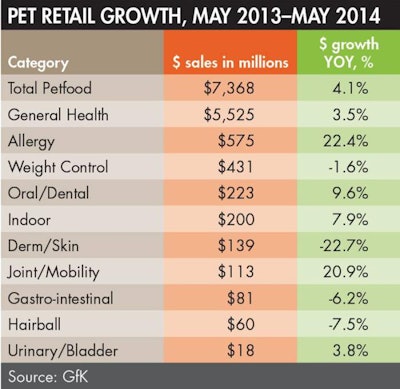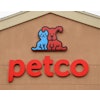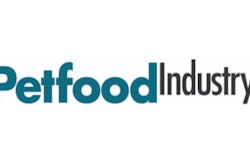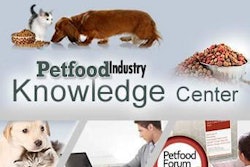
In 2013, the US petfood industry was a US$11.8 billion business, with the pet shop and veterinary clinic segments seeing significant growth (6.5% year-over-year and 7.6% year-over-year, respectively). According to GfK, a research company that monitors pet specialty trends in the US, pet shops contributed the majority of that number, US$7.3 billion, while vet clinics (US$1.5 billion) and farm feed ($US3 billion) rounded things out.
Most segments are contributing to the industry’s growth, but pet treats in particular are a solid bet right now. In the four quarters of 2013, dog treats grew 11.4% (January–March), 11.7% (April–June), 10.4% (July–September) and 7.9% (October–December), according to GfK. Cat treats were similarly profitable, growing 7%, 8.7%, 8% and 7.8% in the four quarters of 2013. Dry cat food contributed the least growth, with increases of less than 3% in each quarter (see Table 1).
In the 12 months through May 2014, pet treats in the US brought in a total of US$884 million, according to GfK data released in June. Dog treats brought in the bulk of that number, with US$795 million, while cat treats brought in US$88 million.
Natural products continue to be hot sellers right now, as more and more consumers see their pets as members of their families who deserve the best petfoods they can find—and turn to specialty foods to fulfil that idea. Natural petfoods are driving category growth, according to GfK, at 11.7% year-over-year, and account for US$4.6 billion in sales annually.
Two-thirds of all dog food sales were natural in 2013, as well as 41% of all cat food sales. In the 12 months through May 2014, natural dog products brought in US$4 billion, growing 8.8% from the previous 12 months. Natural cat products brought in US$636 million, a growth of 10.6%.
In 2013, natural products for dogs out-sold non-natural products in all three of the main categories (dry food, wet food and treats), though the largest opportunity for growth remains in the treats category (see Figure 1). For cat products, non-natural still dominates, leaving plenty of opportunity for future growth in all three categories (see Figure 1). Both cat and dog natural products are trending upwards: In May 2013, natural dog products claimed 65.7% of their market share; that number increased to 68.3% by May 2014. Cat natural products had just 39.4% of their market share in May 2013, a number which increased to 42.3% by May 2014, according to GfK.
Breaking things down further, grain-free, limited ingredient and freeze-dried petfood diets are growing significantly, largely within the natural market where most of those products fall.
Sales for grain-free petfood diets are growing rapidly, according to GfK data, at 32.4% year-over-year, and account for US$1.96 billion in sales annually. More than a quarter of all petfood sales are generated by grain-free products (steady growth from 12.8% in the beginning of 2011 to 25.9% at the end of 2013). In the 12 months ending May 2014, grain-free dog food brought in US$1.6 billion, while grain-free cat food brought in US$362 million.
Limited ingredient diets continue to grow as consumers become more aware of their pets’ specific needs. In the 12 months through May 2014, the segment contributed US$564 million to the market, growing by 22.8%. Dog food in this category brought in US$564 million (22.8% growth year-over-year) and cat food brought in US$34 million (23.6% growth).
Freeze-dried products grew 74% between the beginning of 2012 and the end of 2013, according to GfK. Despite contributing just US$59 million to the overall US petfood market (relatively small compared to the larger specialty segments), growth is significant: 49.7% overall in the 12 months through May 2014. Dog food once again came out in the lead, with US$51 million and 50.9% growth, while cat food in the freeze-dried segment brought in US$8 million and 42.3% growth.
As consumer awareness of their pets reaches an all-time high, the petfood industry can expect such markets to continue to provide huge opportunities for growth. Natural and grain-free will surely maintain their dominance, but the even more specialized segments within those categories are well worth looking into.
Total petfood retail sales in the 12 months through May 2014 reached US$7.37 billion, 4% growth year-over-year (see Table 2). Foods that fell under “general health” contributed US$5.5 billion of that, with the category seeing 3.5% growth. However, more specific segments that may seem relatively small in dollar contributions saw significant growth, including allergy diets (which saw 22.4% growth through May 2014) and joint/mobility formulas (20.9% growth). Others lost momentum (formulas focusing on skin health dropped 22.7%, hairball formulas by 7.5% through May 2014) and some saw moderate growth (urinary/bladder health formulas, 3.8% growth).
The smaller trends within the larger picture may be the keys to success in an increasingly diverse setting of petfood offerings, but it’s certain that the specialty market overall is a good place to be.



















